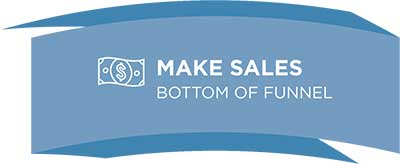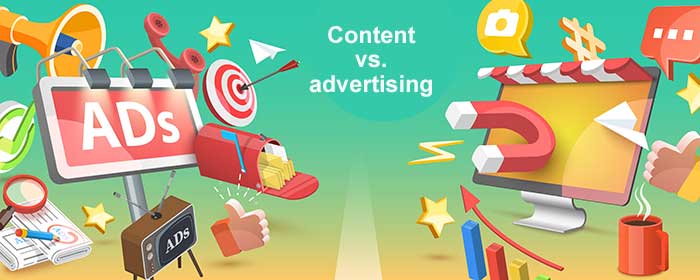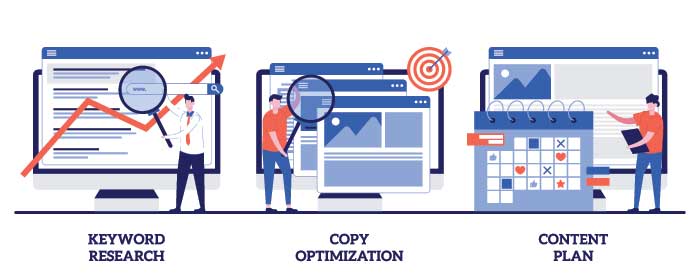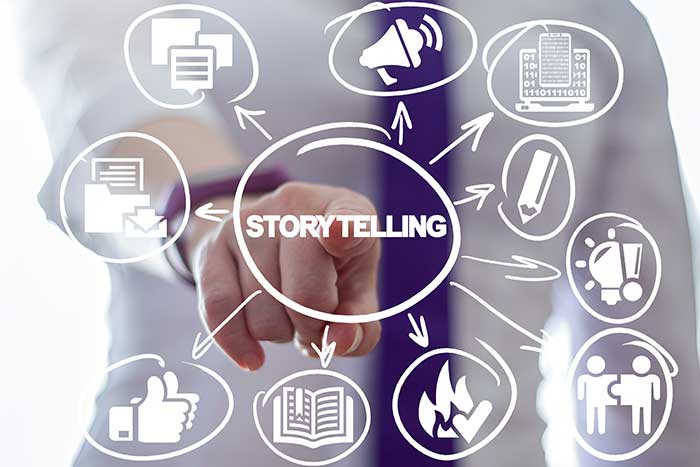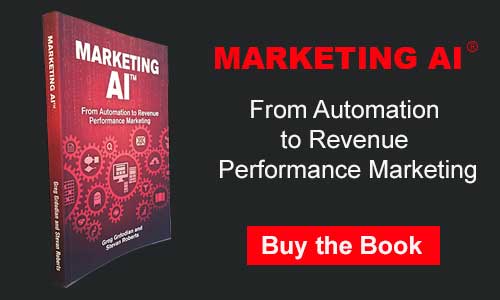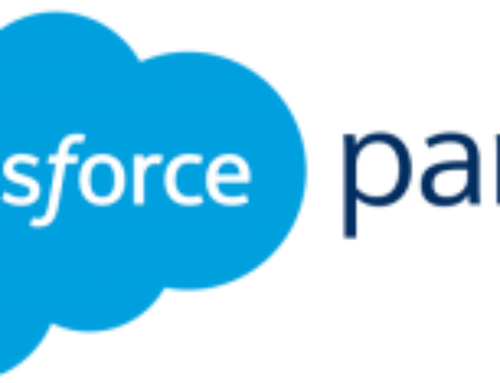The sales pipeline is no longer a straight shot from your first impression to closing a sale. Today, potential customers educate themselves, and they come to you knowing a great deal about you. Now, your leads are 50% to 80% more educated about the market and your product/service before even speaking with your organization. Content marketing lets you control that education by building the knowledge base your prospects use to learn about you and providing thought leadership that builds trust in your brand. Thought leadership demonstrates your company’s contribution to best practices, helps leads make informed choices, and gives customers a reason to buy from you instead of the competition.
“Content is king.” In almost every marketing article or book that discusses content marketing, you’ll find that phrase, but it isn’t an accurate metaphor. It leaves out one of the most important aspects of content. When people stay on your website to read a feature-length article, take action on your landing page, or subscribe to your newsletter, they’re essentially casting a vote. Content isn’t king; it’s democratically elected.
With that in mind, what can you do to get your audience’s vote, win its support? People vote with their feet. If they don’t find what they like from your competitors, they’ll come to you — and you have to be ready to deliver. In this chapter, you’ll learn how to earn your prospects’ votes by getting an audience interested, building authority, gathering vital customer data, eliminating duplication, generating leads, and retaining valued customers with your content marketing.
Your MARKETING AI® is instrumental in every aspect of your content marketing strategy. With it, you coordinate cross-channel content seamlessly, pinpoint exactly where each prospect’s interest lies by analyzing contextual data, and precisely deliver the right information at the right time according to your prospects’ position on the Lead Lifecycle. You’re able to customize content to an unprecedented degree, giving your future customers all the information they need to make buying decisions organically instead of relying on advertising alone.
A powerful MAI also quantifies how well your content marketing strategy works in ways other tools can’t manage. Conventional analytics are not well equipped to measure ROI on content-based revenue marketing. Older tools give feedback about search terms or bounce rates. Still, they can’t track more sophisticated metrics, such as the revenue contributions of each channel, the most effective landing page design, or lead-scoring priorities that point the way to your future top customers.
The more specific you are about your content strategy and what you expect it to accomplish, the more successful your content. It isn’t enough to define success as “more traffic” or “increased sales” when directing your MARKETING AI®’s content marketing distribution. Defining audience segments, quantifiable metrics, and measurable results would be best. Marketing automation is one way to keep everything on track; by letting you discover more about what your audience wants, reaching it with triggered messages, and engaging it with targeted content.
Customer Profiling — Buyer Personas
In previous blog chapters (the discovery process), you learned who your customers were and developed buyer personas modeled on them. Using that insight to
Types of Content — Worth More than a Thousand Words
It’s vital to deliver the right information at the right time to your audience, and here — in content marketing — is where it matters most.
Give prospects too much information early in their buyer’s journey, and they aren’t ready to make use of it. Deliver too little content in the middle and end of the funnel, and you lose their interest. Your MARKETING AI® plays a critical role in establishing the right nurture track for your leads and catering to them with the right information for their stage of the buying journey.
Content for the Top of the Marketing Funnel
At this stage, your potential customers sense that they have a problem and are still fact-finding. They have enough information to recognize your brand, but they haven’t yet committed to or signed up for more content from you. Therefore, your content creation team’s focus here is to offer information that encourages deeper exploration, answering the “who” and “what” questions on the Lead Lifecycle diagram. You don’t want to flood them with jargon-laden articles, webinars, or in-depth case studies at this point, because you haven’t established that they’re ready to accept these from you. Your MAI’s lead-scoring system gives interactions with this content a lower priority than contextual cues from leads that explore deeper content.
Top-of-funnel content includes:
- Articles
- SEO articles
- Overview blog posts
- Infographics
- Brief YouTube videos
- Promotions
- Short-form social media blasts
Establishing Authority in the Middle of the Marketing Funnel
As they move deeper into your MARKETING AI®’s nurture program, your leads know that they have a problem and have some idea how your offer solves it. They’ve given you enough of their data to establish a dialogue, but they’re still deciding whether or not to choose you. Your content’s role here is to build your authority by educating your prospects. They want proof that you’re a leader in your industry, so content at this phase is usually longer and more specific than the information designed for newer leads. They want their “when,” “where,” and “how” questions answered in greater detail.
Note that some content types appear in more than one portion of the funnel. Some content channels can effectively carry helpful information for leads at every level of your sales funnel. With your MARKETING AI®, you can tailor that content to each customer using JavaScript tokens.
Middle-of-funnel content includes:
- E-books and print books
- White papers
- Calculators and self-tests
- In-depth blog posts and articles
- Subscription-based, topic-specific newsletters
- Promotions
Approaching the End of the Funnel with In-Depth Content
At the later stages of their trip through your sales funnel, your prospective customers need to know details, and they need to understand why you’re their best choice. You’re still establishing your authority, but now you’re doing so with an audience that has amassed some intellectual authority, too. They want to know the answers to questions that an expert is likely to give them, and you must be that expert to win their business. Some of them are past customers who already know your bona fides and now need the details on a different set of purchases.
These clients already want to choose you, or they wouldn’t be here. At this point, your content marketing strategy should be to validate that choice.
Bottom-of-funnel content includes:
- Deep-dive webinars
- Case studies
- Testimonial videos
- Pricing promotions
- Promotions
It’s worth noting that all phases of the buyer’s journey involve promotions. Promotions are always important catalysts for action. The type of promotion you use is still heavily dependent on where your lead is in the funnel, so contextual cues are as important here as ever. Introductory offers have the most appeal at the top of the funnel, while loyalty programs most effectively reach the prospects near the base of your sales funnel. You should rotate product promotions with no more than one product promo for every three pieces of content sent.
Multipurpose Content
Content for content’s sake isn’t valuable for you or your readers — it’s just more noise. Everything you produce should serve a purpose, and with a MARKETING AI® managing your content stream, most of it helps multiple goals at once. To your audience, content exists to educate them, and that’s important, too. It’s part of the larger picture, though, and while it’s the fundamental point of your content, that’s just the beginning of what content does for you in an AI-assisted marketing strategy.
Content as an Information-Gathering Tool
Many visitors interact with your website anonymously. These visitors have not identified themselves with their email addresses, so your contact strategies are limited. A gating strategy offers a valuable asset as an inducement to the visitor to provide their contact information by placing a form in front of your most valuable content. It typically asks for first and last name, email address, phone number, job title, and company name, but those initial pieces of valuable data can lead to much more.
Progressive profile gating asks for a little more information each time as leads move through content gates until your MARKETING AI® builds a complex, detailed view of that lead by the MQL stage.
Content as a Motive Force
Your content isn’t just informational. It also propels leads through the Lead Lifecycle, taking them from the early, basic “who” and “what” questions through the “how” and “where” of the middle portion of the funnel and on to the “why” as they approach sales-readiness. Your initial content might be an SEO article or retweeted link to a blog post introducing a prospect into your sales funnel. Middle-of-funnel content is designed to lead readers deeper and establish your bona fides as a thought leader. At the bottom of your funnel, it prepares leads for the transition to sales, ensuring that the hand-off is as smooth as possible. Your MARKETING AI® categorizes content into streams and delivers the right message to the right audience at the right stage of the Lead Lifecycle.
Content as a Quality Indicator
Your content doesn’t just teach leads about the subject you’re discussing; it also teaches them about you. When it’s well crafted, knowledgeable, and purposeful, it sends a strong quality signal. If it’s poorly written or doesn’t seem relevant, the message isn’t as positive.
Content Marketing versus Native Advertising
One concept closely linked to content is native advertising, but these two marketing tools are not the same. Although they both involve creating and distributing content, they serve different purposes. It’s important to draw this distinction between content and advertising because conflating them can cause you to create content that doesn’t establish your authority and advertising that fails to persuade. While both are designed to guide leads’ progress through the Lead Lifecycle, your goals for content marketing are different from those for your advertising efforts. Let’s take a closer look at how native advertising and content marketing differ so that your MAI can effectively manage both asset types.
Content marketing is strategic; native advertising is tactical. With content marketing, you and your content team provide your audience with a steady stream of relevant, useful information that builds your authority over time. Native advertising is meant to guide specific buying decisions during specific campaigns and has a shorter half-life.
Content marketing attracts customers to your websites, landing pages, and social media channels, but native advertising is usually placed on a pre-existing platform, such as an online magazine or an article-marketing site.
To put it another way, you own and distribute your content marketing assets, and you buy space for your native advertising. If assets appear on channels you control, including your blog, company website, email, and newsletters, they fall under the aegis of content marketing. If you pay to distribute it elsewhere, including payment via revenue sharing, it’s advertising.
SEO and Content Marketing
SEO is a huge part of digital marketing. But it’s so important to your overall content strategy. SEO ensures that people can find your content. Without it, you could be publishing work that revolutionizes your industry, but no one will ever know. As with native advertising, SEO is a complementary part of the complex whole that is content marketing. With it, you broaden the top of your sales funnel considerably and give prospective customers plenty of answers to their “who” and “what” questions.
The key to using SEO well is to make it part of a strategic plan, not a temporary tactic. All it takes is one wave of algorithm changes from Google to erase all the traffic gains from a short-term SEO scheme that relies on thin content, keyword stuffing, and content-mill articles. Even when these tactics work for a short time, which they rarely do as those algorithms have gotten more sophisticated, they don’t lead to lasting traffic or higher revenue.
A well-founded SEO strategy rests on custom-written content that uses keywords naturally, has intrinsic value to readers, and incorporates links intelligently. In fact, it’s sometimes hard to separate well-crafted SEO content from any other form of content marketing. Good content becomes more valuable as you supply more of it, and SEO content counts toward that sum. Integrating SEO into your overall content marketing is a sound long-term strategy, as well as a good short-term investment.
Search engines love synergy, and by combining short but informative SEO pieces with longer, in-depth content, your MARKETING AI® gives them what they want while delivering your prospects the information they need at each stage in the Lead Lifecycle.
Building Authority with Content Marketing
Everything you publish contributes to your audience’s perception of you. Ideally, that perception is one of knowledgeable, authoritative expertise. SEO content gives your top-of-funnel traffic a boost, but those gains will be temporary if your new visitors don’t get what they expect to find from the rest of your content. Marketers and business owners who invest heavily in SEO alone, without supplying sufficient information to welcome curious prospects to dig deeper, will lose their audiences’ interest exactly when they should be encouraging it toward the middle and end of the sales funnel.
Where are your areas of expertise? That knowledge has tremendous value to your blog’s readers, and when you and your content creation team blog about it, you encourage visitors to share that knowledge with new readers. The more details you offer, the more authority your words have, and the deeper into the sales funnel your content propels your prospects. There are no shortcuts here: Authority takes time and effort to build. The good news is that the process never stops; every blog post you publish, every newsletter you send, and every white paper you share lends weight to your words.
The ability of your MARKETING AI® to deliver the right content at the right time also helps establish your brand authority. If the waiter at your favorite restaurant is able to anticipate your needs, filling your glass precisely when it needs to be filled and telling you every detail of the chef’s most enticing special, you feel as though you’re in good hands.
Clearly, a knowledgeable professional is taking care of you. Your MAI accomplishes the same authority for your brand by serving appropriate, relevant content while it’s hot. Marketing automation ensures that you prove not only your industry knowledge but also your knowledge about your customers’ needs. That sends a powerful signal about your brand.
Creating Compelling B2B Content
All the careful content marketing in the world won’t help your company if your content’s subject matter is dull. Too often, B2B companies assume that because their products are utilitarian, the content the company presents can’t be creative, colorful, and clear. These subjects may take a little extra thought on your content-creation team’s part to make them sing but think of H. L. Mencken’s assertion: “There are no dull subjects. There are only dull writers.” You have an affinity for the subject, can show your visitors more about the people behind your products, and can offer a fresh look at familiar topics.
Mencken, who never wrote a dull line in his life, would have been appalled at some of the noise many sites publish in the mistaken belief that quantity matters more than quality. If inexpert writers can make an all-inclusive Caribbean vacation sound less exciting than a crowded bus ride across town on a cloudy day, what will they do for a B2B company that sells industrial cleaning supplies? Your writing should have a voice and a personality to it that makes it compelling and resonant to an audience whose first experience with you might be this top-of-the-funnel SEO content. At later stages, the personalized content your MARKETING AI® chooses to send automatically increases interest when each member of your audience feels it was tailor-made.
Some subjects aren’t so much dull as they are perplexing to those outside the industry. A labor-law attorney, for example, has far more knowledge about that specialized legal field than the clients seeking information, but those clients shouldn’t need a background in law to find out the five most important things the human resources manager should do to prevent costly litigation. When your content creation team builds content around personas and looks for ways to streamline and clarify challenging subjects, you’re rewarded with well-informed, educated prospects whose trust you’ve earned by giving them valuable information. They’ve taken a large part of their buyers’ journeys with you and are willing to continue if you give them a little expert guidance.
People love a story, and if you can frame information as narrative, they’ll follow the tale you and your content creator tell. Let’s look at a company that supplies latex gloves to doctors, cooks, and clean-room techs. An article about manufacturing those gloves could be dry, but reframing it with a narrative flow that follows one particular pair of gloves from raw materials and blending to molding and QC communicates the same information in a livelier way. You immediately increase interest by giving a story a beginning, middle, and end. Thanks to your MARKETING AI®, you can customize the message, sending a different story to each of those industries, demonstrating unique value to each audience segment.
At their heart, business transactions are still interpersonal relationships, and any relationship is strengthened when the parties involved know one another a little better. Share something of yourself, your company, and your personnel in your content. Invite your subscribers in to see how the sausage is made, or the software is developed. Let them see the people behind the products they buy. Adding the occasional monthly profile of one of your employees to your blog or communicating your excitement about your latest equipment upgrade puts a personal face on your relationship with your prospects. With your MAI, you already know some details about them; your content can turn that knowledge into a two-way street.
It’s a myth that great content will always find an audience without at least a little effort on your part. Especially in B2B sectors, companies tend to silo their content, concentrating on publishing newsletters and keeping up with social media. Automating these activities so your creative team can put its efforts into content creation gives you more time to focus on the bigger picture.
Your MARKETING AI® controls distribution and publicity to link social media, SEO, and other content streams together, so each acts as a force multiplier for the others. When everything you publish leads back to other branded content, your audience for each channel grows.
Your typical prospects interact with you in multiple ways, especially in today’s information-rich climate. They might read a tweet with a link to your blog post, click that link, follow a link in your blog to a landing page, alt-tab to a new window to check out some articles, and possibly download a white paper or two. Only then do they click through the landing page to get to your site. If any of these channels seem out of tune with the others, that discordant note can be enough to interrupt a prospect’s flow through your marketing and sales pipeline.
Analyzing the Effectiveness of Your Content Marketing
Content is often difficult for conventional marketing software to quantify. Your return on other investments is measurable, but how do you monitor the impact your latest blog post has had on buying decisions?
How do you know the meaning of the behavioral and contextual cues readers give you as they interact with your content? Your MAI can tell you that like no other marketing software can, and give you a comprehensive, actionable usage analysis that informs your content marketing strategy.
A MARKETING AI® documents attribution, engagement, views, downloads, and how closely correlated viewing a piece of content is to a prospect’s conversion to a customer.
You’ve learned how to develop buyer personas modeled on your customers. Your content marketing strategy should speak to each of these customer personas on a personal level — something only a MARKETING AI® can do. With automation, you take this idea to its logical conclusion and deliver customized one-on-one content. It’s as close as you can get to be all things to all prospects, and we’ll look at this in greater depth in the next blog, Chapter 8, which is about personalization.
Next Blog: MA Series – Chapter 8 PERSONALIZATION
A MARKETING AI® Mindmap
In this series Marketing AI®: From Automation to Revenue Performance Marketing, you’ll learn much more about what marketing automation is, what it isn’t, and where it fits into a marketing strategy. You’ll also discover more about traditional marketing through the lens of automation and read a compelling case study about how one company went from finding itself in a marketing dead zone to flourishing as an automated, intelligent, and responsive organization that converted its old marketing plan into a revenue marketing strategy.
Sign Up To Receive Future Enewsletters
Copyright 2022 Reach Marketing LLC
MARKETING AI® is a registered trademark of Reach Marketing, LLC




